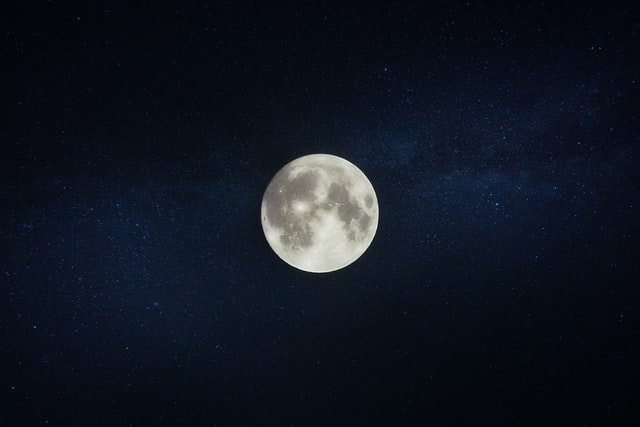Ever think about how all your cannabis consumption is affecting your sleep? Is it helping? Hurting? Maybe dulling down your dreamscapes? Understanding the concept of dreaming is tricky enough. So how does the additional factor of marijuana consumption tie in? In this case, we’re going to be looking at how THC consumption might be influencing your sleeping states.
There is a lot of research yet to be done in the realm of cannabis and sleep. Still, there are some interesting findings to touch on. A few theories (some tested, some not) stand out in helping explain the relationship between regular cannabis consumption, restful states, and dreams. Again, there is not enough information to directly link the two. But, understanding our sleep cycles and how marijuana use influences each cycle is a good starting point.
What Sleep Research Says

A recent study, published in May 2020 by the Sleep Research Society, addresses the question of how cannabis affects a consumer’s sleep. It is important to note here that this is looking at the consumption of THC, not CBD. The study assessed groups of non-smokers and regular cannabis users using a portable PSG headband. Through at-home EEG and EGO recording, the study was able to track REM latency and REM sleep percentages. Subjects also completed self-reports on dream activity.
Overall, the results of this cannabis and sleep study had some definitive outcomes. The group’s research shows that cannabis users generally had longer sleep latency and lower percentages of REM sleep. Sleep latency refers to the length it takes for an individual to fall into a restful, deep sleeping state. There is other past research that supports this same idea- finding that more time is spent in slow-wave sleep cycles than REM in cannabis users.
The Different Sleep Cycles
:max_bytes(150000):strip_icc():format(webp)/the-four-stages-of-sleep-2795920_FINAL-5c05c2fc46e0fb00018dac3d.png)
First, let’s get a better understanding of REM (Rapid Eye Movement) sleep and our other sleep cycles. Essentially, there are two different sleeping states- Non-REM sleep and REM sleep. Research identifies four different stages within these that are characterized by specific brain activity. Our brains cycle through these stages multiple times throughout a night’s rest.
Stage one is the initial transition from awakeness to a light sleeping state, your brainwaves starting to wind down. Stage two is another period of light sleep where your brain activity, heartbeat, and breathing relax. This state is also where your body temperature lowers. Stage three is known for being a stage of deep sleep, where our brain and heartbeat are at their lowest levels of activity. This is also where muscle and tissue repair* may occur. Research suggests we spend most of our time sleeping in the second and third stages.
The final stage of sleep is REM sleep, or your Rapid Eye Movement sleep cycle. Your brain activity is similar to that of its awake state and your breathing and heart rate are higher than previous cycles. In our REM sleep stage, our bodies are in a paralyzed state and we tend to see the most dream activity. With our body in its most relaxed and immobilized position, our brain activity increases.
According to Robert Knight, a professor at UC Berkley, REM sleep is essentially the universal metric of unconsciousness. Knight’s lab research team has been conducting studies on brain “noise” during various states of sleep and wakefulness. They have figured out a way to test brain activity through only an EEG to closely track a subject’s dreaming state through brain arousal. They refer to REM sleep as dream sleep, as most dream activity occurs during this stage.
Cannabis Consumption And REM Sleep

Again, I want to be clear that there is still so much research to be done about the concept of cannabis and sleep. Especially if you’re looking at the influence of cannabis on dreams. But, from research on sleep cycles and dreams and how cannabis influences these sleep cycles, we’re able to pinpoint some answers.
As I referenced previously, the Sleep Research Society published findings that suggested a correlation between cannabis users and lower REM sleep percentages. This recent study also found that sleep latency was affected by the use of THC.
I think it is important to note that addressing sleep latency, REM cycle percentages, and dream analysis for CBD consumption is a whole different ball game. CBD is known for its potential benefits to sleeping cycles and restfulness. THC also has a reputation for helping people “fall asleep” faster- but are they actually getting the most restful sleep with lower REM cycle percentages? Here are some strains that we think might help with insomnia.
The concept of cannabis consumption and sleeping/dreaming states is really a complex and vastly under-researched realm. Should we, as regular cannabis consumers, worry about not getting that restful sleep? What if we’re looking to dream, but are having our dream sleep cycles interrupted by our THC use?
We may still be revitalizing our bodies in the slow-wave non-REM sleep cycles, but how might our restfulness be impacted? If we’re not getting into that deep dreaming state of restful unconsciousness due to our cannabis habits, should we make a change? There are a lot of questions still to be answered, but the perplexing idea of THC influencing the dream-states of stoners is one I would like to get to the bottom of.
Are Your Dreams Influence By Your Cannabis Consumption?
In my experience, I don’t really dream, and I tend to end my nights with a joint. I only get into that dream state if I wake up in the middle of the night and then fall back asleep. And when that happens, my dreams are vivid and bizarre. What about you? Have you noticed your cannabis consumption influencing your dreams or sleep cycles?
RAPPER WEED: WHICH RAPPERS HAVE CANNABIS PRODUCTS IN THE MARKET?
10 UNDERRATED FEMALE RAPPERS YOU SHOULD LISTEN TO RIGHT NOW
9 RAPPERS FROM DETROIT YOU NEED TO KNOW THIS YEAR








